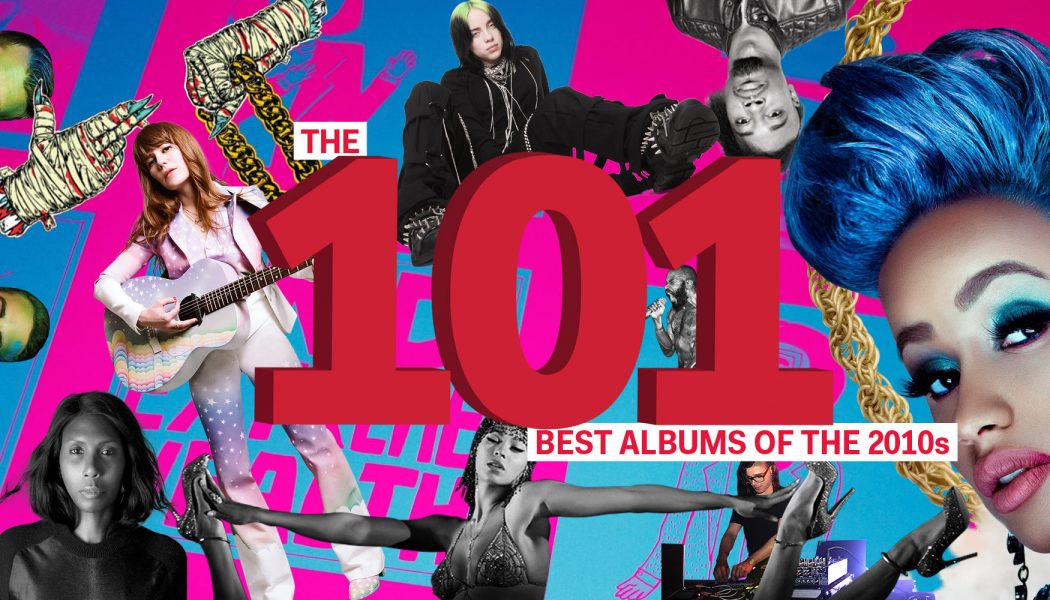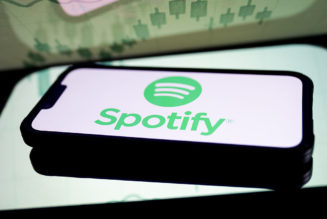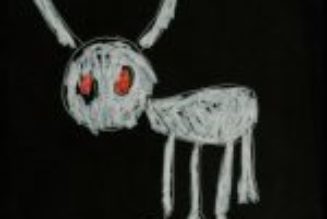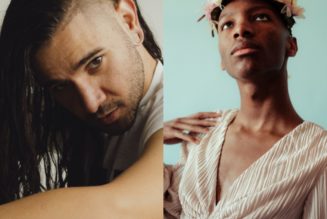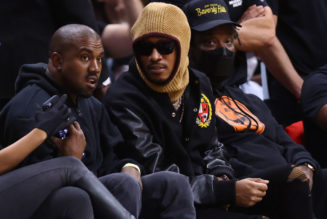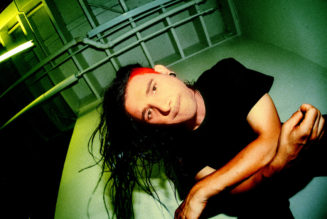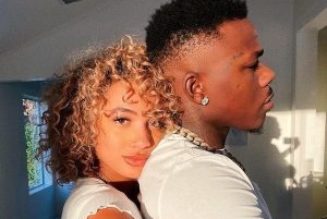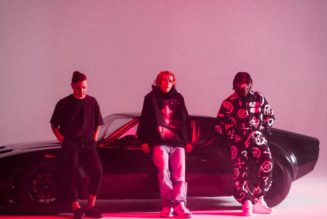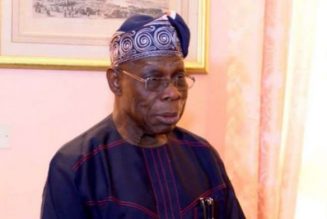
Why now? Because — and there’s no reason to ignore the elephant in the room: SPIN stewardship has changed hands many, many times since we made the online jump — we got our chance. Because plenty of our favorite albums of the last 10 years could still use a boost. Because some of the already unanimously beloved music on this list still merits further praise. Because we relish excuses to sound off on the music that’s affected us the most and to enlist some of our favorite writers to do so. Because the works of art below serve as a reminder that the 2010s weren’t all bad. Because lord knows we need the distraction. Because it’s fun.
There’s a lot of music that isn’t on this list. Which, duh, but plenty of artists whose work defined the decade for many, many people, including many of us, just wouldn’t fit. Some of these artists didn’t move us as much as they did other braintrusts of music writers. Some were cherished by past incarnations of SPIN and haven’t aged as we hoped; some were overrated in the first place. Some are overrepresented in critical circles at the expense of other artists who aren’t viewed as equally valid, and some we don’t even like. Many, many artists we love we just didn’t have room for. Have fun guessing who’s who: LCD Soundsystem, the War on Drugs, Tame Impala, Carly Rae Jepsen, Father John Misty, Jay-Z, FKA twigs, Joyce Manor, Kacey Musgraves, Sleep, Arcade Fire, 03 Greedo, G.L.O.S.S., Daft Punk, Cobalt, Bad Bunny, Calvin Harris, HAIM, Jon Hopkins, Mbongwana Star, Rae Sremmurd, SunnO))), the National, Migos, DJ Koze, the New Pornographers, St. Vincent, D’Angelo, M83, Foxing, Tyler, the Creator, Angel Olsen, Group Doueh, Nick Cave, Perfume Genius, Vince Staples, Todd Terje, Kurt Vile, SZA, Tim Hecker, Spoon, Brockhampton, Shabazz Palaces, Torche, Moodymann, CupcakKe, Lorde, the late, irreplaceable David Bowie and Leonard Cohen. And those are just the ones we know you’re gonna ask about.
What does that leave then? The most pleasurable, innovative, infinitely replayable, groundbreaking, heartbreaking, hilarious, challenging, emotionally overwhelming, unrelenting, memorable, did-we-already-say-pleasurable collections of music that we leaned on over the last 10 years for pure life-enhancing sensation. Some of these albums taught us something. Some of them made us dumber. Some of them, for better or worse, defined the concerns and musical trends of the 2010s. Others we wish had that kind of reach. And perhaps most importantly, many of these artists and works upended the status quo as the world questioned its power structures like never before. One of them is still Drake. Here are the 101 albums and album-shaped music packages that SPIN would most prefer the past decade to be remembered for, and we guarantee you’ll find at least one new discovery to change your listening habits, if not your world.
101. Drake, Take Care (2011)
This guy. For better or worse, Drake was the 2010s. He ran so far with Kanye’s 808s & Heartbreak playbook that he eclipsed its creator, spotted trends faster than Tan France when he landed on the French-tuck, and rode waves harder than an Olympic surfer. He also brought emo’s worst tendencies to rap music, with a weird, condescending streak towards women whom he expects to return his texts even after they’ve got whole new lives, even whole new kids. His unedited self-indulgence extended to his album lengths: From 2016 to 2018 alone he released more than 252 minutes in combined full-lengths (or playlists or whatever he wants to call them to avoid criticism) without even factoring in his loosies and guest spots on others’ work. The album dedicated to his perilously delayed fatherhood announcement also found him rapping about having “Mob Ties” (???). He was oversharing run amok, the perpetually thirsty mayor of the friend zone. He’s also the most-streamed artist of all-time. His unhealthiest songs — drunk-dialing classic “Marvin’s Room,” the delusional “Hotline Bling,” a Rihanna duet where the hook is literally Drake telling a woman he’s too good for her — have often become his biggest. A great deal of his fame and fortune has come from all of this being mistaken for sensitivity.
Take him or leave him, Drake made his best, most enjoyable work with Take Care, diluting his self-pity with seductive party anthems like “Crew Love,” featuring a just-discovered fellow Torontonian known as the Weeknd (who was responsible for a sizable chunk of the record). Top-shelf Rihanna, Lil Wayne, and Nicki Minaj duets break up all the breakup tunes, with the new star holding his own on every one, eventually drawing the entire musical universe into his overcast, fame-obsessed world. He deserves credit for making it not just okay but cool for a rapper to talk about his insecurities at length, and his ability to weave in pop culture from all corners — turning “Back That Azz Up” into a melancholy bedroom banger, referencing George Strait — is unmatched by virtually anyone. He could stay on top for another six years, or less than six months, but the last decade unquestionably belonged to him, and Take Care is where to direct anyone who’s still wondering why. — Brenton Blanchet
100. Best Coast, Crazy for You (2010)
From DIY venues in Los Angeles to the vinyl display of every Urban Outfitters in America, Bethany Cosentino and Bobb Bruno’s debut full-length heralded the return of ’60s-style girl-group vibes fuzzed over with millennial stoner malaise. Cosentino’s sun-dazed songs about the paralysis of heartbreak had more staying power than the men who inspired them, particularly the inescapable “Boyfriend” and “Our Deal.” When she unforgettably sang “I wish my cat could talk” on “Goodbye,” her prayers were nearly answered when her feline Crazy for You cover star Snacks became internet-famous in his own right. — John Paul Bullock
99. Earl Sweatshirt, I Don’t Like Shit, I Don’t Go Outside (2015)
Internet rap-mixtape fame that ballooned during a widely publicized stint at a reform school “for at-risk boys” forced Thebe Neruda Kgositsile to grow up in public. His evolution from Rakim-in-troll’s-clothing continued with this sophomore LP, a fistful of bleak, introspective Polaroids from the edge, which also introduced us to his matching, claustrophobic self-production style. Paranoia, weed smoke, dense word-blocks, and matte-black beats swirl like a loner’s vape clouds within a taut, half-hour frame. “Name gettin’ bigger than the difference between us / Niggas is fake, I limit the features I give ‘em,” Earl spits, conceding that his brand is passive-aggressive panic management. On the depressive I Don’t Like Shit, I Don’t Go Outside, “Sweat. Shirt.” wasn’t just his rallying cry but also an item he taught hip-hop to slump around the house in. — Raymond Cummings
98. Deerhunter, Halcyon Digest (2010)
Halcyon Digest is a tranquil coda to Deerhunter’s lustrous indie-rock breakthrough on 2008’s Microcastle, nestling into dreaminess throughout most of the record — from the astral projection of “Earthquake” to the layered guitar jangle of “Revival.” (At one point, a harmonica appears. No one said dreams make sense.) Bradford Cox remained the band’s creative engine, one of the most unpredictable bandleaders in the business, and his songwriting evolved in stream-of-consciousness and accessibility at the same rate. But the indisputable peak of Halcyon Digest came on “Desire Lines,” one of two tracks spearheaded by guitarist Lockett Pundt; it builds patiently for six-plus minutes, wrapping with a majestic instrumental climax built on interlocking electric guitars that spiral into infinity. And that’s not even the last time the album does that. — Ryan Reed
97. Anderson .Paak, Malibu (2016)
We never forgot the dot after this one. After overcoming homelessness, doing a bid as a drummer for an American Idol finalist, and winning over rap’s greatest A&R man Dr. Dre, Anderson .Paak secured the bag and banged out his soul with his wave-crushing sophomore effort. From the subtle horns in “The Bird” to the heavy drum fills of “Heart Don’t Stand a Chance” to the atmospheric funk of “Am I Wrong,” .Paak channeled both Kendrick Lamar’s rasp and Smokey Robinson’s beauty; it’s no surprise both would become collaborators. You can hear his jubilance at finally getting the world’s attention, and he gives that energy back to his strongest set of songs. With love to August Alsina, no other XXL Freshman has had pipes like this, or for that matter, the chops. After Malibu, .Paak earned the right to follow-up with a record called Yes Lawd. — B.B.
96. Chance the Rapper, Coloring Book (2016)
Chancelor Bennett’s third label-free outing transcended the general idea of the mixtape-as-secondary-release, a powerful, gospel-informed examination of everyman issues like love, family, and faith. The exuberant Chicago rhymer had already become one of the biggest success stories in the early days of SoundCloud, not just performing on SNL as a nominally unsigned artist but eventually hosting and it was Coloring Book that established that Chance was at the forefront of popular music — indie or otherwise. Book builds on what recent Kanye has attempted with less self-awareness; Chance is adept at conveying Christian themes in a cohesive hip-hop album-whether-he-likes-it-or-not that never sounds didactic. “Angels” is one of the most life-affirming songs of the past 20 years by anyone to grace a mic. The guy wears so many hats, it’s a wonder that he’s stuck with that infamous “3” cap for so long. — Stereo Williams
95. The Hotelier, Home, Like NoPlace Is There (2014)
If there’s an album that better exemplifies the 2010s “emo revival” shift — away from slick, problematic mall-punk and toward pure, cathartic fucking bloodletting — it’s probably hiding on some teenager from Akron’s Bandcamp page, waiting to be discovered by the next wave of genre pioneers. The Hotelier’s 2014 breakout is alternately uncomfortable and awe-inspiring, a concerted effort by frontperson Christian Holden to exorcise demons of all stripes. Their novelistic retellings of funerals, splintering friendships, and that old standby, crushing depression, are a work of art unto themselves, but they’re bolstered by the band’s ability to run emo’s full gamut, from pop-punk (“In Framing”) to screamo (“Life in Drag”) to noisy, sloppy Midwest fare (“The Scope of All This Rebuilding”).
Unlike many of their forebears, Holden’s lamentations are defined by empathy over selfishness, especially on “Housebroken,” where a sexist relationship is portrayed as an owner abusing his dog. Home, Like NoPlace Is There asks its listeners to rethink what “emo” means while simultaneously hitting every one of the genre’s benchmarks — which is probably why this site named it the best album of its entire kind. — Patrick Lyons
94. Arca, Mutant (2015)
After collaborations with Björk, Kanye West, and FKA twigs, Alejandra Ghersi’s 2015 breakthrough shattered expectations and redefined her vividly amorphous sound again and again like radioactive Play-Doh over the course of a single 20-track album. Mutant does exactly what it says; it grows, changes, and doubles back on itself, rarely sounding like anything you’ve heard before. It’s a beautiful and often harrowing journey through experimental synth-driven electronica. “Vanity” hisses, squeaks, and stutters its way to a majestic pounding climax. “EN” pushes a vocal sample to its limit then twists it into a double-helix with a searing wall of white noise. And “Soichiro” starts as an atmospheric piece of movie music then descends into the comic horror of a solo organ line for almost a full minute before jacking back up into a crashing, transcendent finale. What, you thought it was safe to sit still? — J.P.B.
93. Courtney Barnett, Sometimes I Sit and Think, and Sometimes I Just Sit (2015)
“Elevator Operator,” the opener from Courtney Barnett’s first true LP, follows a dead-eyed 20-year-old who ascends an Australian retail building and contemplates life on the roof while bystanders beg him not to jump. That’s the big picture, but the real joy is found in the filler: The pyramids he builds out of Coke cans in the grass, the visions of SimCity as he stares down at the ant-like people, the tortoiseshell necklace that dangles between a woman’s breasts. Sometimes I Sit and Think, and Sometimes I Just Sit thrives on the ultra-specific world-building of a master storyteller — albeit one who often uses her deadpan delivery to insult herself and loves her some loud distortion. Barnett’s little details stick with you: The photo of a Vietnam vet glimpsed by house-hunters in the folksy “Depreston” (which sounds like a Juno soundtrack reinterpretation of Fleetwood Mac’s “Dreams”), or the origami she folds her money into on grunge-pop centerpiece “Pedestrian at Best.” She’d never run out of origami after this one. — R.R.
92. DaBaby, Blank Blank (2018)
It’s increasingly easy to overlook since he released three more successful albums in the next 18 months, but Blank Blank was DaBaby’s tipping point. The Charlotte, North Carolina rapper had refined his goofball charisma over the course of a dozen mixtapes, cycling through early gimmicks like the name Baby Jesus and wearing a diaper at SXSW, until he reached his final form: Just a guy in a Hornets jersey rapping loopy boasts like “Pulled up with that tool in an Uber / I’m in the pool with a cougar.” Not to mention his DIY hooks sung in his signature baritone without electronic aid. Blank Blank was initially distributed by Roc Nation before it was re-released by Interscope two months later, with the barrage of punchlines on the wonderfully obnoxious “Walker Texas Ranger” becoming a viral video and the blithely flirty “21” breaking him through on the radio. But before the chart ubiquity, DaBaby had just these 24 minutes of near-constant bars, with the occasional literal two-second pause to call himself the best motherfuckin’ rapper and issue the command “next song!” to the engineer. — Al Shipley
91. Charli XCX, Pop2 (2017)
The pop star’s pop star, or maybe Dr. Frankenstein’s: a restless lab-coated formalist for whom boys and parties and Auto-Tune are only so many volatile neon liquids, piped in colorful corkscrews from beaker to centrifuge in hope of explosions. Pivoting from a foundered line of investigation into mainstream pop stardom on 2014’s “Boom Clap,” Charli and a rotation of likeminded collaborators (jobbing Dane MØ; much-missed prodigy CupcakKe; fellow pop-gratis-pop miniaturist Carly Rae Jepsen) began a new research partnership with PC Music head A.G. Cook, recklessly dissolving Charli’s syrupy, super adhesive melodies in experimental acid-bath production. Presenting their findings on Pop2, the team is interrupted after only three minutes and 17 seconds by a gargantuan rubbery synth line that suddenly bursts from the mix like a kaiju. The rest — of this delirious blurt of a posse album — is rampage. — Theon Weber
90. Superchunk, I Hate Music (2013)
“I hate music, what is it worth? / Can’t bring anyone back to this Earth,” Superchunk frontman Mac McCaughan sings at the beginning of “Me & You & Jackie Mittoo,” insisting in a moment of grief that he can’t find solace in music, but trying anyway. The death of the band’s longtime friend Dave Doernberg looms over the album much like McCaughan’s breakup with bassist Laura Ballance haunted 1994’s Foolish, the band’s weightiest and most emotional album before I Hate Music. For the first time, the eternally youthful North Carolina quartet that made “Hyper Enough” sounds aware of their own mortality, and the rasp creeping into McCaughan’s voice suits him on slow burners like the partially acoustic opener “Overflows,” while his falsetto register proves even more powerful as the band rushes through each breakneck chorus of “Void.” And “Trees of Barcelona” and “Breaking Down” make for stirring festival indie singalongs that suggest Superchunk’s mentorship of younger bestsellers via their own Merge Records has rubbed off on them. Great bands rarely sound like they still have a stride to hit on their 10th album, but I Hate Music puts Superchunk in elite company with the Stones, Sonic Youth, and few others. — A.S.
89. Jason Isbell and the 400 Unit, The Nashville Sound (2017)
Americana hero Isbell paid his dues all the way from spotlight-stealing Drive-By Truckers third-banana to topping Billboard’s rock and country charts with 2015’s Something More Than Free, but his real gift is for being so straight-laced that it exposes the absurdity of conventions his sensible sanity out-norms. So it’s no surprise that his best album concerns his “Anxiety” with the privilege he wields in a “White Man’s World” and doesn’t sound like your Aunt Jemima-missing Facebook aunt when he sputters, “I can’t enjoy a Goddamn thing.” But there’s nothing straight-laced in the joke about his own audience “clapping on the one and the three,” or the sudden admission “I used to want to be a real man / I don’t know what that even means,” or the shuffling “Jumpin’ Jack Flash” speed that carries the “Cumberland Gap” chorus away. — Dan Weiss
88. Homeboy Sandman, Kindness for Weakness (2016)
In his unsigned days, along with Creature, C-Rayz Walz, and the legendary Percee P, Homeboy Sandman used to stand in front of Fat Beats hawking his tapes to shoppers on the way out. But by 2016, the lyrical mastermind of Elmhurst, Queens was an established artist on a venerated label, and used his third missive for Stones Throw Records to reflect on the calm before the Trump shitstorm. With beats by sample-adept freethinkers such as Georgia Anne Muldrow, Edan, and Jonwayne, Kindness for Weakness had a looseness that allowed the mid-30s rapper to drop introspection in new ways, such as on “Talking (Bleep),” where he plays Gil-Scott Heron to Edan’s Brian Jackson in a psych-funk talking blues: “Yo, I was riding my bike down the bike path / Going the wrong way, but who’s to say what the wrong way is? / Unless they not minding they business / Along comes this chick, like ‘You’re going the wrong way mister’ / In her brain she thought she was an authority figure.” Karens, man. — Ron Hart
87. My Bloody Valentine, m b v (2013)
Oh… you had to wait four years for a new Frank Ocean album? Don’t ever try being a My Bloody Valentine fan. By early 2013, most fans had given up hope of ever receiving a proper follow-up to 1991’s Loveless. It was like waiting for Andy Kaufman to reveal he’s alive: Sure, that would be cool, but who’s really naïve enough to still hold out hope? That m b v came into existence somewhere other than Kevin Shields’ hard drive felt like enough of a divine intervention. Even more miraculously, the album managed to live up to its comically long gestation period, recapturing the inscrutable melodic haze of Loveless while veering into sharper, more aggressive terrain during its final act (sup, “Nothing Is”). The album even helped spark a mini-shoegaze revival, as bands like Slowdive and Ride reformed after long absences and welcomed an appreciative new generation of fans into the fold. Now if only Shields would admit it went platinum. — Zach Schonfeld
86. Bassekou Kouyate and Ngoni Ba, Jama Ko (2013)
The return of individual players to the top of the musical presses would be so, so, welcome in the 2020s. Not that this bluesy, intricate Malian family outfit is going platinum or even earning $312 via Spotify anytime soon. But you don’t have to be an adept of African music to hear on first listen what kind of awe-combusting technique on Jama Ko can coexist with songform, groove, meditative beautiful music. You also don’t have to get far into track two to hear barn-incinerating rock’n’roll. There’s strong political content here, as Kouyate rejects fundamentalist Islam in a desert region with such proximity to the fraughtness that his own friend was the Malian president overthrown by military insurgence. And his network, from onetime bandleader Youssou N’Dour to genre-encyclopedic blues legend Taj Mahal, who cameos here, is impressive. But all you need know is what’s in your ear: The ngoni, Kouyate’s signature, lute-like instrument, and his spidery, unthinkably variegated prowess on it, underscoring his wife Amy Sacko’s fiery — as in warm — singing in a language your heart will understand. Play it for your favorite Bill Maher fan! — D.W.
85. Gary Clark Jr., This Land (2019)
Gary Clark Jr. spent his 2010s becoming music’s go-to guitarist and helping make “genre” itself something we may just leave out of the 2020s. No one else can boast of playing with Big K.R.I.T., Tech N9ne, Bun B and then jamming with B.B. King, Clapton, Petty, and Richards — and that was only the beginning. Clark’s third album, the smoldering This Land, completed his journey from smoky Austin blues clubs to the Hollywood Bowl, because he had almost as many things to say as he had styles to say them in. Confronting Trump-era racism upfront on the title track, he continues tearing down walls through the reggae-infused “Feelin’ Like a Million” and the ’50s garage-rocker “Gotta Get Into Something” with power and fury that no one expects of a Grammy winner for Best Contemporary Blues Album. This Land was where he showed that he wasn’t just one of the most versatile guitarists of his generation already, but one of the best musicians, period. — Daniel Kohn
84. Diaphragmatic, Fear Biters (2013)
In an age where almost everything is streaming everywhere, there’s an extra hint of wonder to that which is only available physically — those artifacts discovered through happenstance. For this correspondent, Fear Biters was a fortunate $7 impulse buy from the Ende Tymes Festival 2014 merch table. Here, one Nate Tandy (former Ohioan, now residing in Hanoi) locates a harsh, mysterious beauty. Trundling, metallic pulses and rhythmic clatter intersect as post-industrial noise, an unwieldy crush of sonic samples, recordings, and manipulations that calls to mind scrapyards and factory floors. The effect is at once distinct and abstract, setting this project apart from other entries in the Harsh Noise Wall hall of fame; like Metal Machine Music, Tandy’s dense, caterwauling roil — his tortured vocals do eventually surface, buried in the mix — scalds itself onto the subconscious like a branding iron. How’d he do that? What components conspired to bend listener’s minds? I don’t know, neither do you — and neither of us really need to know to be floored by Diaphragmatic. In the experimental underground, great pleasures emerge from retail leaps of faith. — R.C.
83. BTS, LOVE YOURSELF 結 ‘Answer’ (2018)
The most popular group in the universe wasn’t even big in South Korea when they hit the scene seven years ago, fronting in ridiculous “street”-wear and armed (“We are bulletproof!”) with hard-rap tropes they were just too sweet to mean. But they found their footing and then some with the pop breakout of 2015’s The Most Beautiful Moment in Life and the art-forward flights of 2016’s Wings, and by the time they busted out their physics-defying choreography to “Idol” on Fallon — an Ed Sullivan moment, tbh — they’d already had a Billboard No. 1 album. This was their second: A marriage of Her’s day and Tear’s night, Bangtan Boys’ most ambitious full-length may be a singles genre’s best ever. From unassailable slaps (“DNA”, “MIC Drop”) to sinuous soul (“Singularity”, “Dimple”), crystalline love notes (“Euphoria”, “Magic Shop”) to breathtakingly vulnerable kissoffs (“Seesaw”, “The Truth Untold”), this is K-pop at an all-angles apex. With their UN visit proving the breadth of their ambitions, they may yet save the world. — Ryan Maffei
82. Counterparts, You’re Not You Anymore (2017)
Maybe kids call it metalcore or screamo or simply melodic hardcore but we know there’s never been a shortage of demand for loud, pummeling, oversized-load-truck-hitting-underpass music that emits rainbow-hued candy sparks on impact. All it needs is a T-shirt-worthy title, a 28-minute time limit to curb dehydration, and the inconceivably pretty fretwork blooming in the margins of “Arms Like Teeth.” The relentless battering ram of doubled kick drums, power-tool squeal-bends, U2-grade overlays of spotless reverb, and avoidance of waste itself is the hook. See you in the pit/pass the Kleenex. — D.W.
81. Sheer Mag, Compilation (I, II, & III) (2017)
This allegedly punk Philly five-piece actually serves up classic rock soul, glam-pop hooks, and Kyle Seely’s Thin Lizzy-bred guitar licks. Sheer Mag’s punk rep isn’t sonic — it’s in their deeply political lyrics and the praxis of putting out a DIY EP featuring singer Tina Halladay’s skull-shaking wail each year from 2014 to 2016. Compilation collects this trio (I, II, and III, Zeppelin-style), all self-recorded on a vintage eight-track in an improvised rowhouse studio and neighborhood practice space. Sheer Mag’s nostalgic warmth is solely musical and their pleasurable buzz is closer to a swarm of smart-ass bees than anything else you’d describe as warm and fuzzy. Full of rage and grief, their rallying cry for liberation and defiance holds even when they show some vulnerability. Resisting power, whether it’s the thrall of a noncommittal jerk (“Nobody’s Baby”) or an increasingly gentrified neighborhood’s slumlords (“Fan the Flames”), requires both a framework for action and the promise of pleasure to keep you moving. This band supplies both; “Action” means more than one thing after all. — Heather Batson
